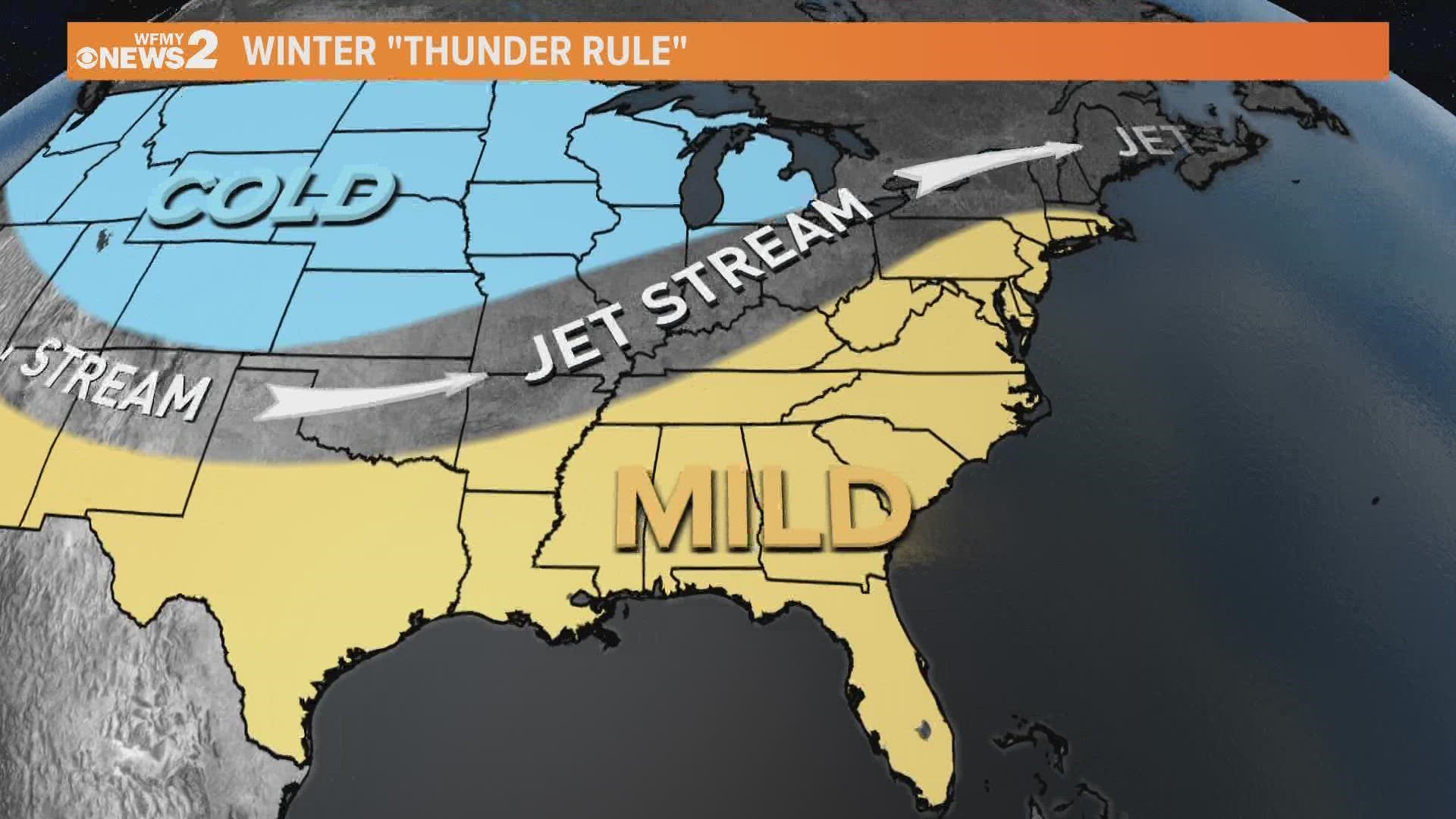GREENSBORO, N.C. — From persimmons to groundhogs to woolly worms, there are numerous old wives tales claiming to predict the severity of winter. As of lately, one such fable is 'roaring' loudly above the rest.
THE QUESTION
As severe weather swept the Southeast shortly around Christmastime, followed by more rain in the New Year, viewers were observing the supposed significance of loud thunder claps in January.
From the comments emerged this question to VERIFY: does thunder in winter mean snow coming soon (specifically within seven to 10 days or two weeks)?
THE SOURCES
- Meteorologist Christian Morgan
- National Weather Service
THE ANSWER
No, thunder in winter does not guarantee snow will follow in the next two weeks. However, it can indicate an unstable atmosphere, which makes conditions favorable for winter precipitation. Keep in mind, statistically January is the snowiest month of the year in most states, regardless of whether there is an audible warning like thunder.
THE PROCESS
Meteorologist Christian Morgan analyzed weather data from the months of December, January and February dating back to the 2015-2016 season. He found fewer than a dozen days with thunder. There was no thunder recorded in the 2017-2018 season, and only one of those seasons had snow within 10 days of thunder.
Though thunder doesn't guarantee snow, it can suggest some atmospheric changes that make snow likelier.
"It's all about the jet stream, which basically sets apart the cold air and warm air. When the jet stream surges pretty far to the north, then it's much warmer here. With the air so warm, when moisture arrives, it can increase our instability, fueling thunderstorms," he said.
So, there is some weather-based rationale behind the old wives' tale -- but don't make any bets on it. Thunder and snow don't always fall in harmony.
Do you have a question to VERIFY? Submit a paragraph or question to:
E-mail: Mmollerus@wfmy.com
Facebook: Meghann Mollerus News
Twitter: @MeghannMollerus

